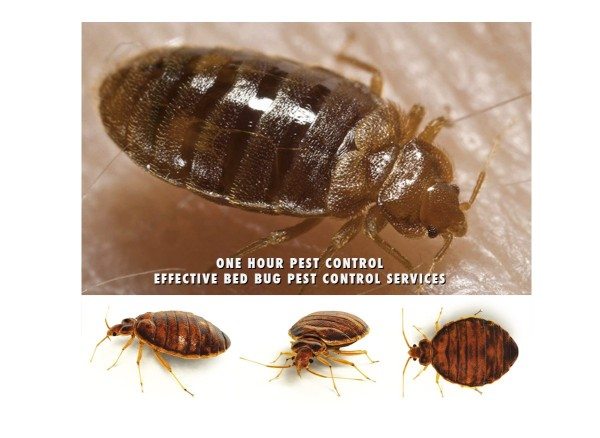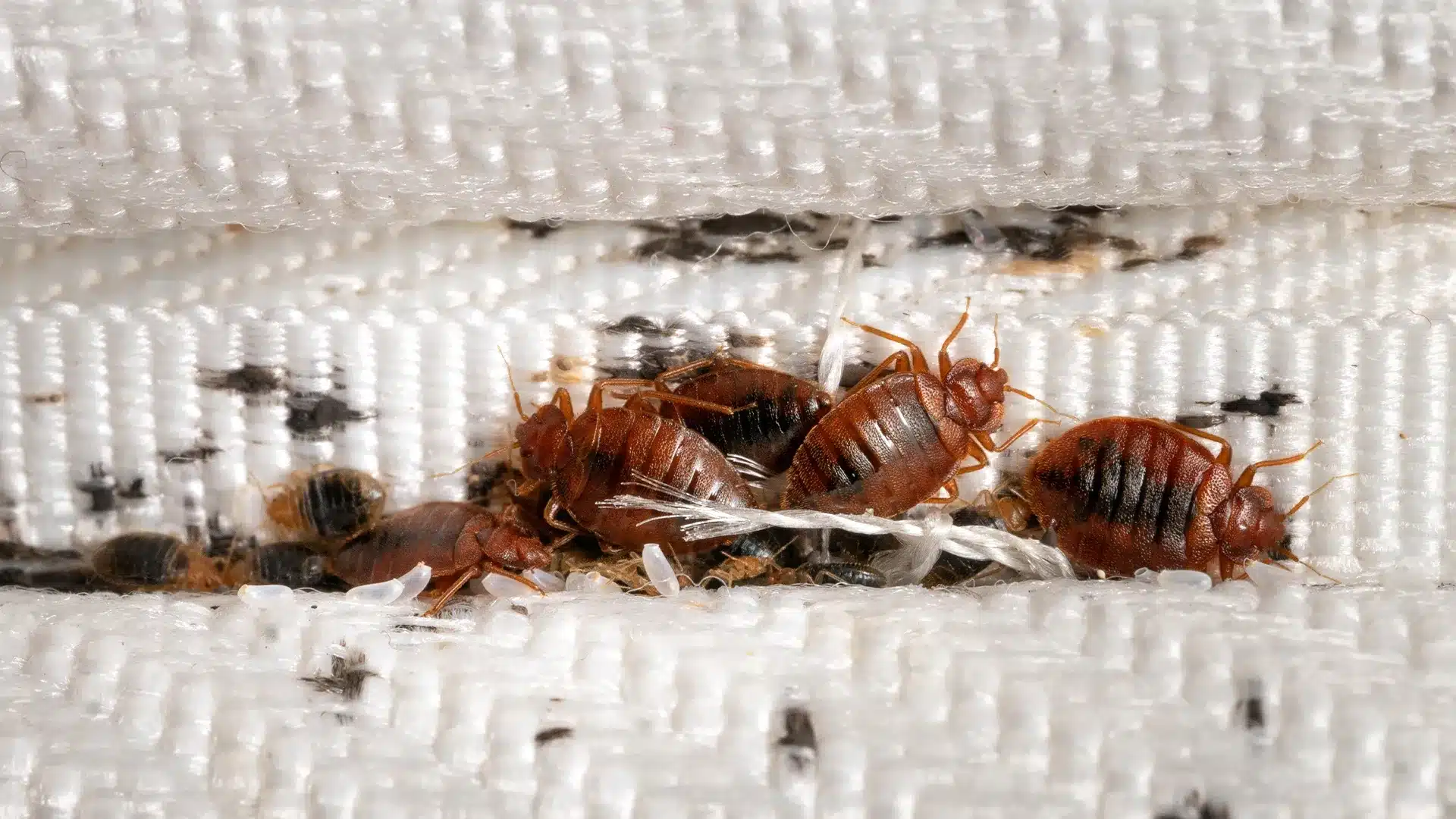Comprehensive Bed Bug Heat Treatment Services for Complete Elimination
Comprehensive Bed Bug Heat Treatment Services for Complete Elimination
Blog Article
Get Educated Regarding the Kinds Of Insect Control Techniques and Their Benefits for Homeowners
Comprehending the various parasite control techniques readily available to house owners is important for reliable insect administration. Property owners that are knowledgeable can make critical options that not only address parasite problems yet also boost the total quality of their living setting.
Chemical Insect Control Methods
Chemical insect control approaches are a critical component of incorporated insect monitoring strategies for house owners seeking effective solutions to pest infestations. These techniques entail the application of chemical compounds made to remove or hinder bugs that threaten personal effects, wellness, and convenience. Typical chemicals used include insecticides, rodenticides, herbicides, and fungicides, each customized to target specific insects.
The main advantage of chemical insect control is its fast efficiency; lots of solutions provide immediate results, decreasing pest populations substantially quickly. In addition, breakthroughs in chemical formulations have actually led to items that are more eco-friendly and have reduced poisoning degrees for non-target microorganisms when applied properly.

Biological Bug Control Techniques
Natural bug control techniques have actually gained importance as home owners seek safer and a lot more lasting alternatives to traditional chemical strategies. Biological bug control strategies utilize natural predators, bloodsuckers, or virus to manage insect populations effectively. This method is not only ecologically pleasant yet also reduces the danger of damage to non-target varieties, consisting of helpful bugs and wild animals.
One of one of the most typical biological control methods involves introducing natural predators into the atmosphere. Ladybugs can be utilized to regulate aphid populaces, while nematodes target soil-dwelling parasites like grubs. In addition, parasitoids-- microorganisms that live on or within a host-- can be employed to regulate specific pest varieties by laying eggs inside them, eventually bring about their death.
One more technique is using biopesticides, which are stemmed from natural materials such as minerals, germs, or plants (bed bug exterminator). These products can effectively target pests while posturing marginal danger to people and animals. Generally, biological pest control strategies supply house owners with an effective means of parasite administration that lines up with environmental concepts, promoting a healthier living setting while lowering reliance on artificial chemicals
Mechanical Bug Control Techniques
Mechanical pest control strategies incorporate a range of methods that literally avoid or remove bugs without making use of chemicals. These strategies are particularly advantageous for home owners looking for environmentally pleasant options while making certain the security of their space.
One typical method is the usage of barriers, such as catches, nets, and displays, which avoid parasites from going into homes or details locations. For instance, setting up home window displays can efficiently maintain insects out, while utilizing physical obstacles around yards can deter bigger parasites like deer or rabbits. In addition, mechanical catches designed for rodents can catch and eliminate these bugs without the need for harmful compounds.
One more reliable approach involves the use of vacuums and brooms to remove pests directly from surfaces. Routine cleaning and maintenance can substantially lower pest populaces by eliminating food sources and hiding spots. Additionally, utilizing gadgets like ultrasonic bug repellents can prevent different bugs with acoustic wave that are unpleasant to them however inaudible to humans.
Cultural Bug Control Practices
Social bug control methods concentrate on customizing the setting and monitoring methods to produce conditions that are much less helpful to pest problems. These practices are fundamental in maintaining a well balanced ecological community and minimizing the reliance on chemical interventions. By modifying agricultural practices, homeowners can properly hinder bugs while promoting plant health.
One usual method includes plant rotation, which disrupts the life cycles of insects termite treatment effectiveness by changing the sorts of plants grown in a specific location (bed bug exterminator). This not only decreases pest populations but likewise improves dirt health and wellness. Additionally, intercropping-- growing diverse plants in proximity-- can perplex insects and lower their capability to situate their favored host plants
Water management is an additional essential aspect of social methods. Correct irrigation strategies can avoid standing water, which functions as a breeding ground for insects and various other insects. In addition, preserving sanitation in and around the home, such as consistently removing particles and food waste, can significantly decrease insect attraction.
Incorporating these social practices into a thorough pest management method permits home owners to create an environment that naturally prevents bugs, consequently boosting the effectiveness of other control methods while promoting sustainable gardening and landscaping.

Integrated Pest Monitoring Approaches
Integrated Parasite Administration (IPM) represents a holistic strategy that incorporates different techniques to try this out effectively manage parasite populaces while reducing environmental influence. This method integrates organic, cultural, physical, and chemical practices to attain sustainable pest control. By analyzing pest populations and their natural enemies, IPM stresses tracking and recognizing bugs before applying control procedures.
One of the core concepts of IPM is using limits, which develop the level of insect task that requires treatment. This makes sure that therapies are used only when necessary, reducing the dependence on chemical pesticides. Organic control techniques, such as presenting natural killers or parasites, job in combination with cultural techniques like crop turning and habitat adjustment to disrupt pest life process.
Furthermore, IPM motivates using least-toxic chemical choices when treatment is necessary, focusing on items that pose minimal danger to non-target microorganisms and the environment. For house owners, adopting IPM approaches not just boosts the efficacy of insect monitoring but likewise advertises a much healthier living atmosphere, cultivating biodiversity and reducing chemical exposure. Eventually, IPM encourages home owners to make informed decisions that balance bug control with eco-friendly responsibility.
Conclusion
Finally, comprehending the different pest control approaches encourages house owners to make educated decisions relating to pest administration. Each method-- chemical, biological, mechanical, Look At This cultural, and integrated pest monitoring-- supplies unique benefits that satisfy different demands and choices. By choosing suitable strategies, homeowners can properly take care of bug populations while minimizing wellness dangers and environmental impacts. This enlightened technique adds to a much healthier living atmosphere, advertising general well-being for animals and family members alike.
Understanding the different pest control techniques available to house owners is important for reliable insect monitoring.Chemical pest control techniques are a critical element of incorporated insect monitoring techniques for homeowners seeking efficient solutions to pest invasions. On the whole, biological insect control strategies provide property owners with a reliable methods of pest administration that lines up with eco-friendly principles, promoting a healthier living setting while reducing reliance on synthetic chemicals.
Cultural bug control techniques focus on modifying the atmosphere and administration strategies to create conditions that are less favorable to pest problems.In verdict, recognizing the various pest control methods equips property owners to make educated choices relating to pest monitoring.
Report this page